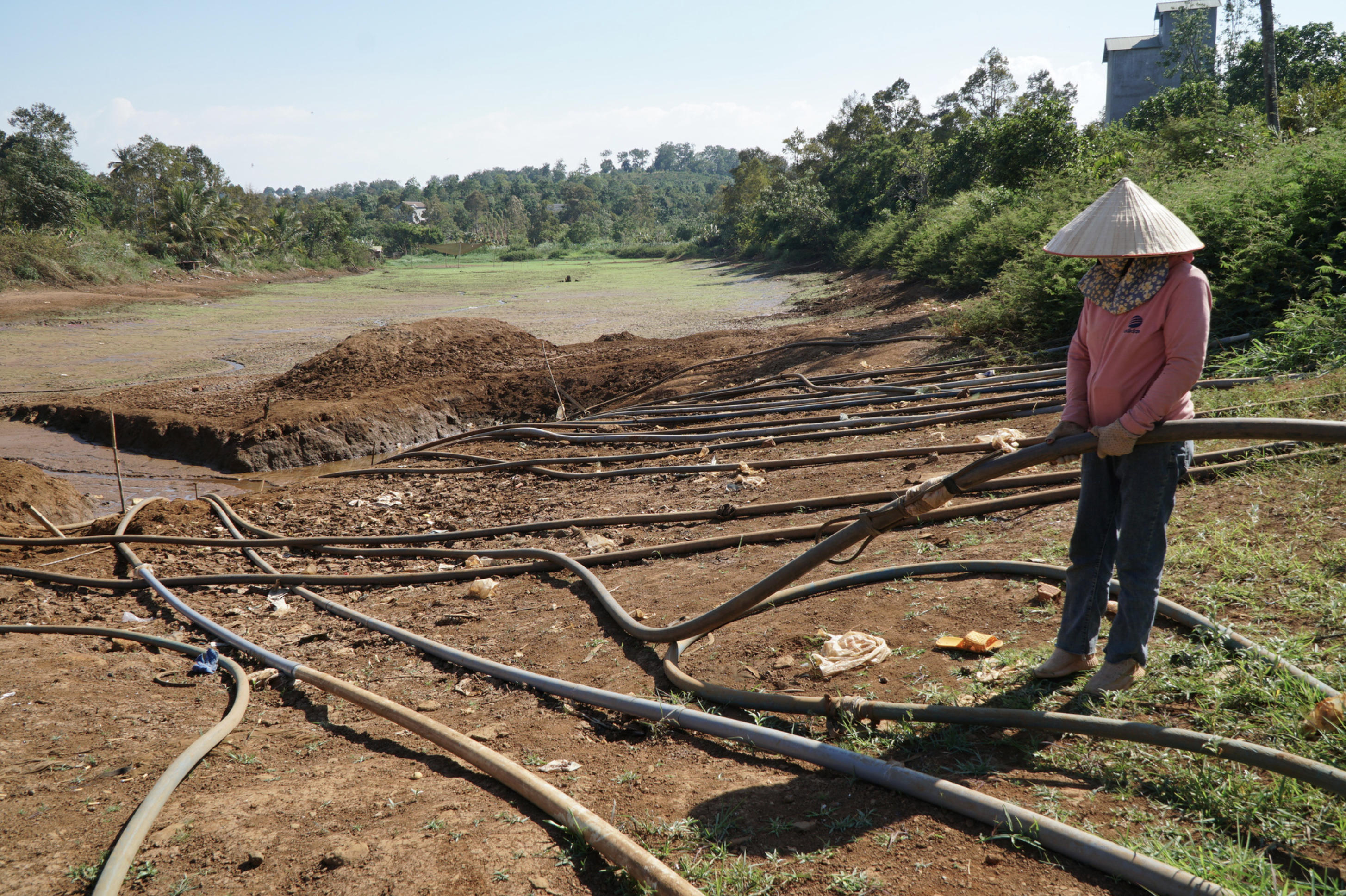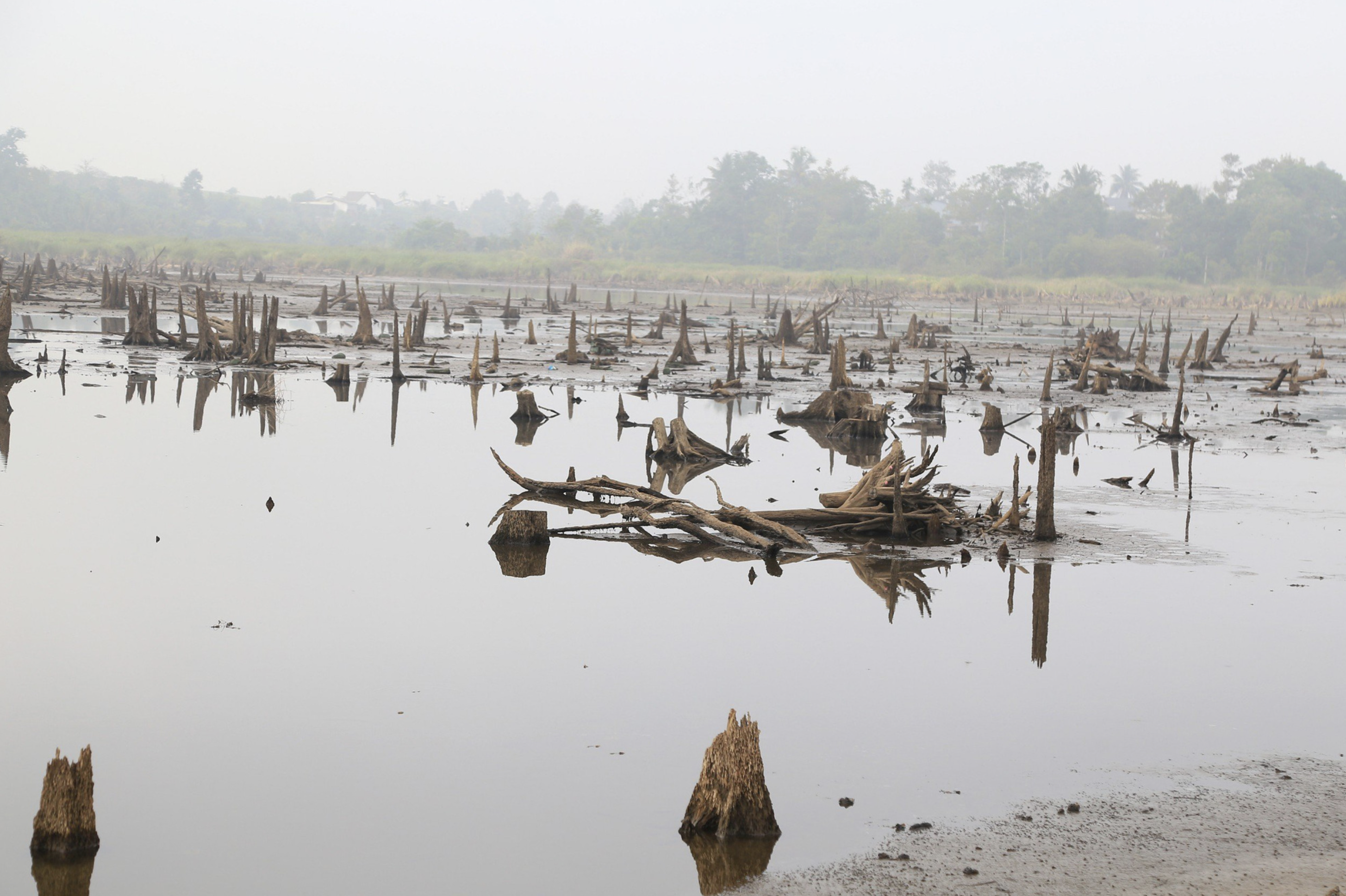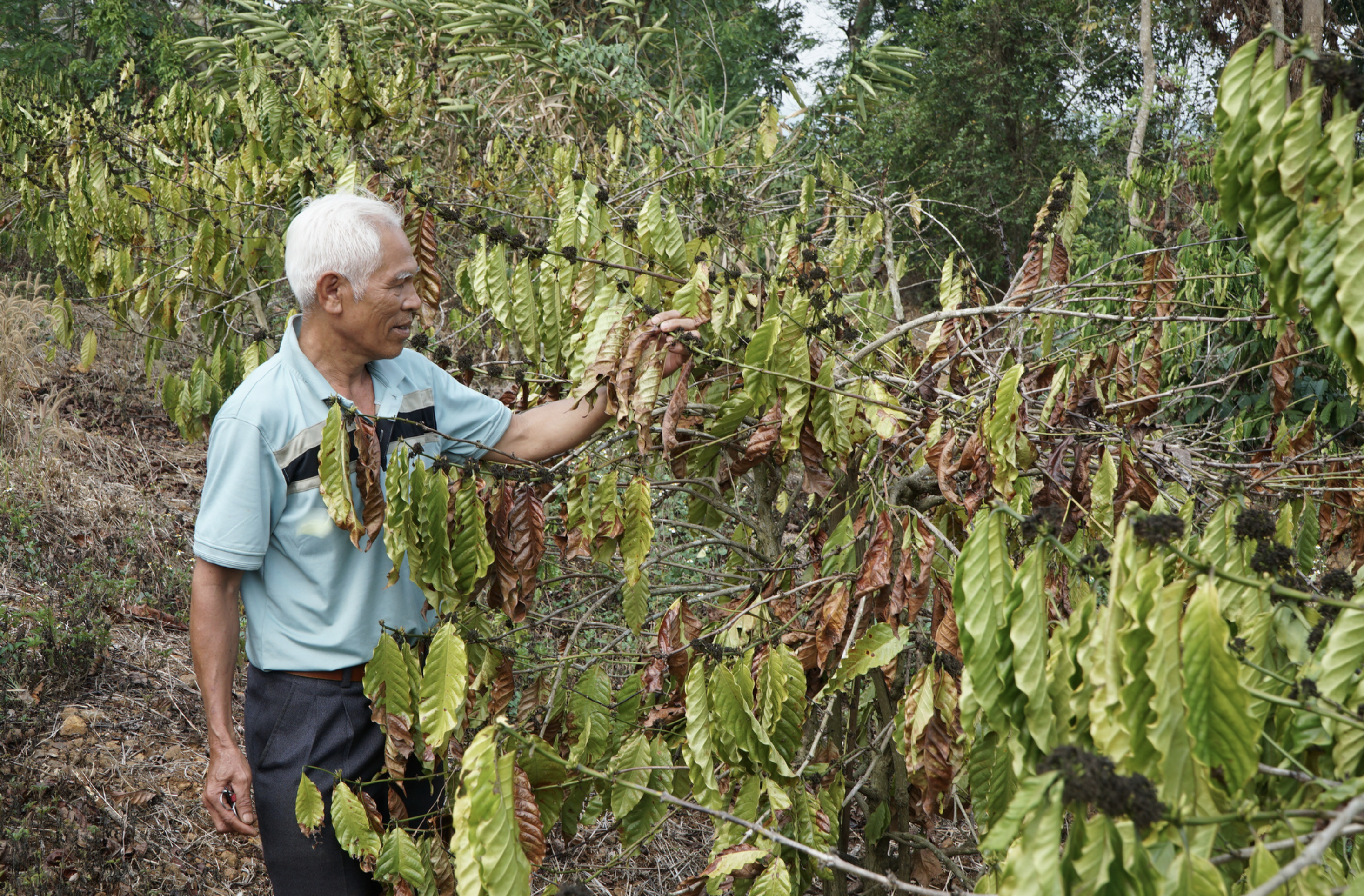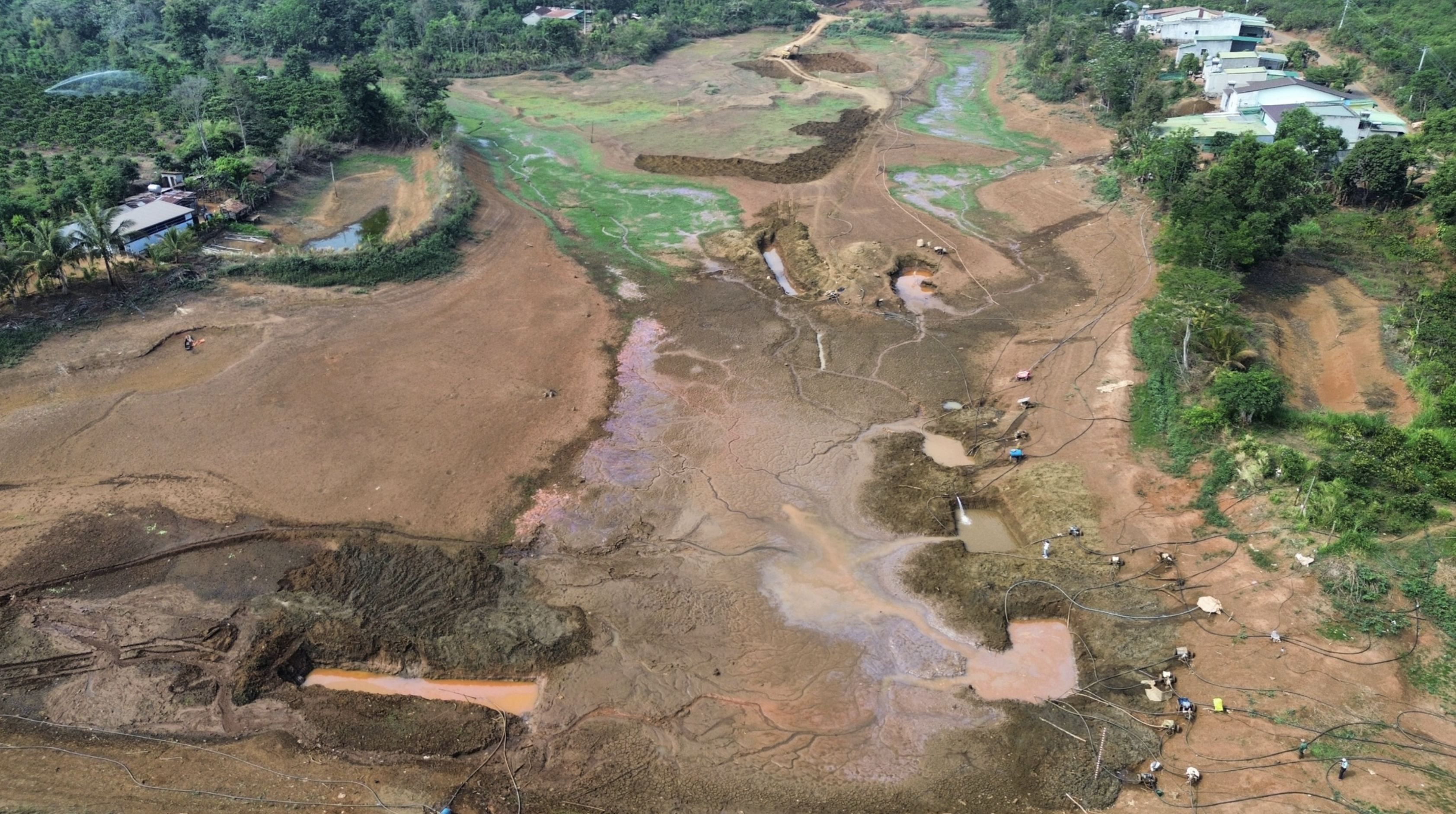Dak Nong Province in Vietnam's Central Highlands region is seeing several lakes, ponds, and irrigation dams drying up at the start of the dry season, leaving thousands of hectares of crops parched for water.
After some recent on-site surveys in various districts, vice-chairman of the Dak Nong People’s Committee Le Trong Yen urged relevant departments and units implement suitable measures for managing water sources to irrigate crops and plants in the province.
Increased efforts to rescue dehydrated plants
Dinh Phu Hai and his wife in Dak Mil Town under the namesake district in Dak Nong tried in vain to pump water from Dak Ken Lake into their coffee field as the lake is running dry.
His coffee field, some one kilometer from Dak Ken Lake, houses 1,000 coffee plants that are drooping from lack of water.
Meanwhile, the crops are entering the flowering period, stressing Hai out.
Hai lamented that prolonged heatwaves and drought have emptied lakes and reservoirs, leaving coffee plants parched and at high risk of dying.
As a result, the price of coffee has surged to VND100,000 (US$4.03) per kilogram.
Like Hai’s family, many other farming households in the town are waiting for an increase in the water level of Dak Ken Lake to quench the thirst of their crops. Some 20 water pumps were put in the lake.
Farmer Nguyen Ba Quan in Dak Lao Commune under Dak Mil District rented a pump for VND120,000 ($4.8) an hour to water his two-hectare coffee plantation.
“The water pumping fee has tripled,” Quan said, wondering whether there is enough water to save his coffee crops.
Truong Xuan Hung, vice-chairman of Dak Lao Commune, said that the commune is home to some 5,400 hectares of coffee and pepper cultivation, but it has only seven irrigation dams, with six of them drying up.
According to the provincial Department of Agriculture and Rural Development, districts like Dak Mil, Krong No, and Cu Jut are cultivating thousands of hectares of mainly perennial crops, but they are severely lacking water.
If it does not rain in the coming days, crops will die, said the provincial department.

Fierce fight against drought
Over 34,200 hectares of perennial crops, including coffee, pepper, and fruit plants, in Dak Mil District are in dire need of water, said Le Van Hoang, chairman of the district.
However, one-third of all 39 reservoirs are running out of water, leading 1,670 hectares of crops to face a high risk of dying of thirst.
Doan Gia Loc, head of the agriculture and rural development division in Krong No District, warned that if the dry season extends until May and June, a significant farming area in Dak Sor, Nam Nung, Nam Xuan, and Tan Thanh Communes will be confronted by drought conditions.
To salvage crops, Dak Nong is exploring methods to enhance water access amidst the prevailing severe drought.
Nguyen Van Dai, director of the Krong No District branch of Dak Nong Irrigation Company, said that the firm had worked with relevant units in some neighboring districts such as Dak Mil and Dal Song to carry water from huge reservoirs to the district.
The firm is planning to bring water from Tay Lake with a capacity of over three million cubic meters to Dak Sor Stream in Krong No District.
Sharing water resources is aimed at watering some 1,500 hectares of crops in a few communes in Krong No.



Like us on Facebook or follow us on Twitter to get the latest news about Vietnam!






















































